Brütal Legend tells the tale Eddie Riggs, the ultimate roadie. The "roadie's roadie", Eddie is the 1st person anyone calls when they need guitars tuned or stages rigged. With a love for hot rods and a photographic memory for every Heavy Metal album cover, and the lyrics those albums contained, committed to memory, Eddie has always felt out of place, like he should have been born earlier, when the music was real.
One night a stage accident knocks Eddie unconscious. With his blood dripping into the belt buckle he wears, a gift from his father, his blood quenches an ancient thirst that sucks him into a world that looks very strange yet oddly familiar, a world where every Heavy Metal album cover and lyric Eddie knows has come to life, a world where the evil emperor Doviculus and his demon army, The Tainted Coil, have enslaved the last remaining humans.
Led by Lars Halford alongside his sister Lita and the mysterious Ophelia, the human resistance is far from helpless. However, what they lack is someone to bring them all together; someone who can organize them and lead them into battle, what they need is a roadie. Under Eddie's command, this barbaric force of hot-rods, Marshall stacks, leather, and chrome will bring this ancient world into the age of Metal.
WP: Who has the honor to speak with us? State your name, rank, and occupation!
I'm Anna Kipnis, and I'm a gameplay programmer at Double Fine.
WP: How long have you been working on Brutal Legend?
AK: It's been about four and a half years.
WP: When Tim Schafer started out his presentation tonight, he mentioned that the game had originally started as multiplayer conceptually and then evolved the single-player component. How did that work for you guys? How did you go about distilling the components that you really like from multiplayer and bringing them over to single-player?
AK: When we originally started, our main focus was just to make multiplayer. We had some really risky gameplay ideas, and we just wanted to make sure that they actually worked. That's why we started with multiplayer, and we wanted to make the gameplay really solid, and we felt that once we had that, we could make a really satisfying single-player, no matter what. At the same time, Tim really had a lot of incredible story ideas, like the vision that he had for the Brutal Legend world, which he was developing simultaneously as he was seeing the multiplayer develop. By the time we finally felt confident with the multiplayer, we had enough content and ideas about how to make the single-player a really enjoyable and rich experience. Another goal of ours had been to have the single-player familiarize you with what the multiplayer ended up being. We had all these different and ambitious goals for it, and hopefully, we really pulled it off.
WP: The gameplay is kind of a cross between a brawler and a real-time strategy game. What were you guys looking for when you were striking the balance between the fighting and RTS elements? What were your inspirations, and how did you iterate through the gameplay testing to find out what worked and what didn't?
AK: Well. (laughs) That's probably the hardest question to answer about this game. We had a lot of influences on the game. Of course, Tim has traditionally done a lot of adventure games, and they're games that are very story-heavy that have this really crazy twist-and-turning narrative that resolves in this very powerful way. We had to come up with basically the gameplay idea that would work really well with that. At the same time, we really tried to do something new and original with our gameplay mechanics this time.
We iterated quite a bit. We had influences, from basically everything that Tim has ever worked on to Herzog's way, these games that had some strategic elements and basically kept you as the main character to get the player emotionally invested.
Then there's the avatar. Instead of switching between different characters, we wanted you to have this one really solid, really strong character that guided you through the game both in multiplayer and single-player. It's hard to name exactly any one influence, but there were quite a few.
As far as striking the balance between what we thought worked for single-player and multiplayer, as I said, we started working on multiplayer first so we made sure that the gameplay mechanics were really solid, and from that, we could be fairly certain that we can introduce the single-player and ramp you up in all the more difficult depths of the game via the control scheme or strategy and kind of involve the story at the same time. It was very challenging to do that, but I hope that we accomplished it.
WP: Speaking of the story and the avatar, how did things change once Jack Black got involved? Was the game always going along with the same story line and it just worked out, or did he have a decent impact on how the single-player story progressed and evolved?
AK: I think he had a huge impact on Eddie Riggs, the main character in the game. He put so much personality into the character, and although he was working from Tim's script, he did a lot of improvisational stuff that we really liked, and some of it strayed from the script a little bit, and we integrated it anyway. A lot of the story had already been written by the time he got involved with the project, but I think he did bring a lot to the game, and a lot of character and uniqueness to Eddie Riggs specifically.
WP: Was there any concern internally that bringing on a big name like that would overshadow the game itself?
AK: No way! We all saw "School of Rock" as a company, and we said, "That would be amazing if we could have Jack Black in our game!" We were never worried about that at all.
WP: Let's talk about the music itself. Brutal Legend is metal-inspired, but what kind of metal? Metal has changed quite a bit, from '80s hair metal to thrash metal, death metal and speed metal. The metal of today isn't the metal that we knew growing up, so what era did you guys focus on when looking for inspiration on the game's soundtrack?
AK: We actually did quite a bit of research with help from a local record store owner who knows quite a bit about metal. We have an amazing sound director, Emily Ridgway, who brought her own knowledge to it, but I think because we have these faction sin our game, they each represent a different genre of metal. For instance, we have Ironhead, which is classic metal — Black Sabbath, Motörhead, Judas Priest. Then we have Drowning Doom, which is more about goth metal; this metal has very dark overtones, maybe has classical structure to it — classical music, that is — and is kind of dark and a little emo. We also have The Tainted Coil, which is more industrial metal — Ministry, KMFDM, some Marilyn Manson, some Nine Inch Nails — they're much more heavy and electronic.
In addition to that, when you're in the open world, we have something called the Mouth of Metal, which allows you to listen to metal in your car while you're driving around. We have over 100 songs sorted into different categories, including new wave of black metal and pop metal.
WP: Are those all original songs created for the game, or are those all actual songs pulled from real artists?
AK: They're all actual metal songs, and we do have original songs created for the game that are more story-based. They're built around what's going on, and there may be some ambient songs, so there is an original score in the game. We have a lot of incredible licensed music as well.
WP: Given the synergy with EA also having the Rock Band franchise, are we going to see any of the original Brutal Legend songs appearing as a Rock Band download?
AK: For myself personally, I really hope so, but I'm not sure what's going on with that right now.
WP: Back to the game's multiplayer, how did you guys come up with the UI design? One of the things that I found difficult was recognizing when my characters were actually taking damage. What was the concept behind the UI design, and how did you focus on what to display on-screen and what not to display?
AK: Tim is a big fan of no head's-up display (HUD) whatsoever. He really wants the experience to be very cinematic and something that's very watchable. Somebody can just come over and see this huge battle unfold with all of the information being in the environment rather than some head's-up display that you have to adjust to reading. For instance, what we tried to do with health was integrate it into the blood textures. As the units around you get bloodier, that's how you notice that you're doing badly. There is something special we have for the avatar; when he or she gets really low on health, it's sort of what we imagine death to be like. All the sounds start to fade into the background, you see things tainted with blood, and you start to hear the heart beat really loud and really fast. What we've tried to do is instead of having a little lifebar, we tried to make the player really feel like he's dying with an arrangement of all the sound cues and visual cues.
WP: Speaking of visual cues, can you talk a little bit about the game's visual style? Where were you guys looking for inspiration when you decided on how the world of Brutal Legend would look?
AK: We drew a lot of inspiration from Frank Frazetta. If I have to name a single influence, that was our biggest one. In addition to that, we looked at a lot of heavy metal album covers, and there's some pretty ridiculous, hilarious stuff that appears on those. A lot of the time, the way we would judge whether something stays in the game is, "Can this be a heavy metal album cover?" If the answer is "yes," then yes, it's in the game.
We tried to integrate things that are completely ludicrous but also epic and beautiful at the same time because that's what metal is about. It's about all this over-the-top imagery that's intense and powerful in its own way.
WP: Today, video games are the obvious whipping boy of various conservatives. Back in the '80s, it was about the metal music corrupting our children. Do you guys take the chance to make any jokes or riffs on the little bit of irony that you're combining metal and video games, both of which have been targeted by the conservative right?
AK: We've actually gone to great lengths to allow people with families to play our game. We have this awesome family filter where you can bleep out the bad words, which invariably makes the jokes funnier. We also have a gore filter, which actually throws up a parental advisory over the offending material in the videos. It's the opposite. We want those families, those right-wingers to play our game and love it. That's our goal.
WP: What would Jack Thompson say if he saw your game?
AK: (laughs) I don't trust the sanity of that man so I couldn't tell you for sure, but I'd like to think that he would applaud our effort.
WP: Is there anything about the game that we haven't talked about that you wanted to add?
AK: What we tried to do with the single-player campaign — and the multiplayer definitely has a lot of elements of this because that's the part we started with — was that we really wanted the player to experience a lot of the heavy metal lore and fantasy that you have when you listen to heavy metal music. Even if you don't like metal, we hope that you would still find something to enjoy on some level regardless of how you feel about the music genre.
WP: One last question that has nothing to do with the game. Since you've been working at Double Fine for quite a while and this game in particular, what is your favorite Double Fine game, and what is your favorite metal album?
AK: I really love both of the games that I've worked on at Double Fine, and I really honestly don't have a favorite. I love Psychonauts because of its charm, and we just poured our hearts and souls into that game. Brutal Legend, I think is a greater accomplishment because we were a more mature team, and we were able to pull off something that was a great deal more ambitious than Psychonauts, so there's a lot of merit in both games. My favorite metal album, I have to say is the first Black Sabbath album. I know it's old-school, but that is my favorite.
More articles about Brütal Legend


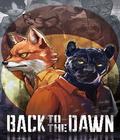
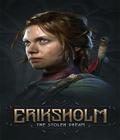
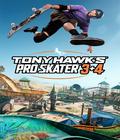
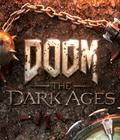
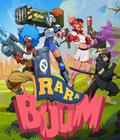
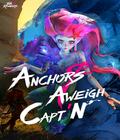
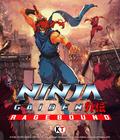
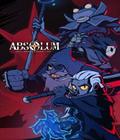

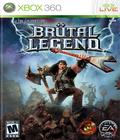 Brütal Legend is a 3rd person Action/Adventure game starring Jack Black in the role of roadie Eddie Riggs, who sets on an epic quest to build an army of rockers with only a broad axe, a big block V8 and his faithful guitar in hand.
Brütal Legend is a 3rd person Action/Adventure game starring Jack Black in the role of roadie Eddie Riggs, who sets on an epic quest to build an army of rockers with only a broad axe, a big block V8 and his faithful guitar in hand.